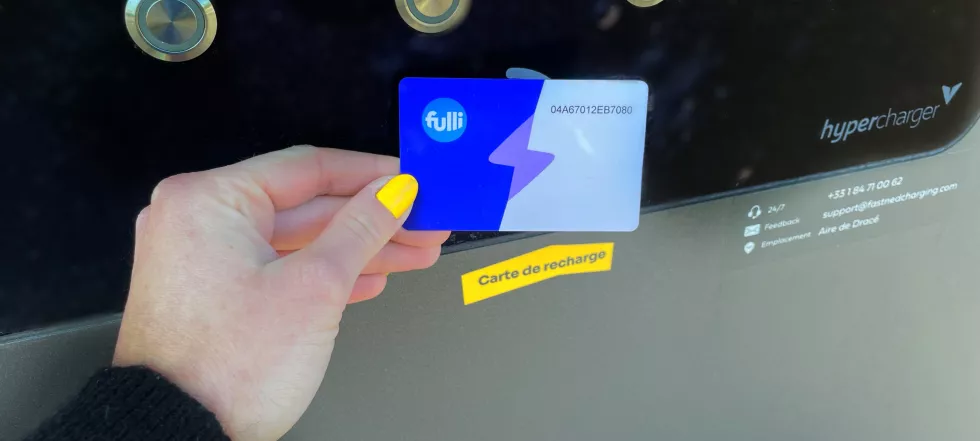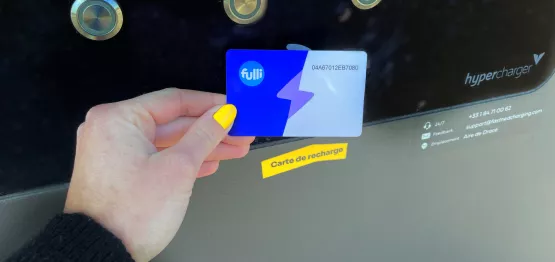
How do I choose the right electric charging card?
That's it, you've taken the plunge and bought an electric or plug-in hybrid vehicle. Wherever possible, you've installed a charging point at home so that you can recharge at night. But when you're out and about, you'll inevitably need to recharge your electric car at a public charging point. That's why it's essential to choose an electric charging card so you can remain autonomous on the road. The best electric card is the one that suits your habits and the use you make of your vehicle: short daily journeys, long distances, holidays, trips in France and Europe. Charging rates, a network of public charging points, a card with or without an annual subscription... we explain everything you need to know to make the most of the pleasure of travelling electric.
From the boom in electric mobility to the development of recharging networks
ADEME confirms that the growth in the electrification of the French car fleet is an asset for achieving the objectives of carbon neutrality by 2050. Despite certain assertions, the impact of an electric vehicle is two to three times less than that of a combustion vehicle of the same size, despite the carbon debt caused by its manufacture and that of its batteries.
According to ADEME, if we add its final energy efficiency, 33% compared with less than 20% for a combustion engine car, the electric car is a real asset for the decarbonisation of mobility. A study carried out by RTE and Enedis confirms this craze: the number of electric cars should exceed 15 million in France by 2035.
But what about the electric charging infrastructure? While 90% of users recharge their cars at home or at their place of work over a long period of time (overnight or during the working day), it is nonetheless essential to have easy access to a network of charging points on public roads if we are to make a success of the energy transition and reduce transport-related CO2 emissions. And despite a slight delay in the start-up of the roll-out compared with the target set by France, the number of 100,000 charging points installed should be reached by 2023, according to figures published by the French Competition Authority.
This makes France the third most equipped country in Europe, behind the Netherlands and Germany, which account for half of all charging points. And the electric recharging network is gradually expanding wherever private cars are used: on roads and motorways, in public car parks and residential garages, and right up to the gates of supermarkets and shopping centres.
With Fulli, finding your electric recharging solution is no longer a headache
Did you know that in 90% of cases, public electric charging points do not accept bank cards? So choosing an electric charging card is a must. This is an RFID card that you scan at the charging point.
Here are the 5 criteria to measure to make the right choice:
- Accessibility of the recharging card to several networks: the aim is to have access to as many recharging points as possible so that it is easy to fill up with energy and there is no need to multiply the number of electric recharging cards. The main operators are: AVIA, BP, Certas Energy Esso, Engie, e-Vadea Spie, Fastned, Ionity, Tesla, Total Energies, Powerdot, Electra, Stations-E, Allego, Driveco...
-
Rates charged by card operators: there are many top-up networks, and operators' rates vary widely and are applied differently depending on the power delivered, per kWh, per minute, a combination of the two or a flat rate (see explanation below).
-
Annual or one-off subscription: it all depends on your recharging needs. You should be aware that each time you top up, a commission will be charged on top of the cost of the energy, which varies from one operator to another.
-
Ease of payment: to avoid having to identify yourself every time you charge, all you have to do is pass your card over the RFID reader and you'll be automatically identified: your vehicle starts charging. As your payment details are stored in your customer area, you save time every time you go to a charging point.
-
The location of compatible charging points and their availability: choose an electric charging card operator that offers a geolocation system to find the charging points that accept your card. This will make your journey all the more stress-free
Because recharging your car should be as easy as charging your smartphone, the Fulli electric recharging card, with or without a subscription, gives you access to almost 250,000 charging points in Europe, including 85,000 in France - the largest network in France! You pay for your electric recharges with a single card. You can manage your account at the click of a button: real-time transactions, top-up history, loss or theft reports, etc.
Fulli is also a galaxy of services for reinvented mobility. With the Fulli mobile application, you can manage your account, of course, but above all you can locate service areas and recharging points - on and off the motorway - with all the information on power, availability and rates in real time.
Don't forget to always have a cable compatible with your electric car in your boot, as public charging points are not usually equipped with a charging cable to connect your vehicle. And adopt eco-driving habits to maximise the range of your electric vehicle.
Understand the fees and charges associated with a top-up card?
When you buy your electric recharge card, either a commission is clearly displayed by the operator or a surcharge is included in the cost per kWh. With the Fulli card, there are no surprises: a commission is applied to each recharge of either €0.35 for the Comfort card or €0.70 for the pay-as-you-go card. To see if the card operator's commission is taken directly from the kWh, you can compare the rates between charging points on the various mobile applications of the electric charging card operators.
More than ever, the motorway is an asset in the service of low-carbon mobility by facilitating access to electric charging points.
A recharging station every 30 km on the APRR and AREA networks
While the regions, départements and towns have invested in the deployment of charging points, the role of mobility operators is not negligible. Motorway operators in particular are increasing the number of charging points, making it easier to travel electrically, even over long distances.
"Decarbonising the motorway means enabling this new generation of motorists to use their vehicles over long distances," says Guillaume Hérent, Deputy Managing Director of APRR-AREA. "The deployment of electric charging points on our networks began in 2012.
Today, 100% of service areas on the APRR and AREA networks are equipped with fast and ultra-fast charging points, i.e. 773 ultra-fast charging points available on the network's 2,320 km.
9 electric charging infrastructure operators offer tariffs ranging from €0.59 to €0.79/kWh: AVIA, BP, Certas Energy Esso, Engie, e-Vadea Spie, Fastned, Ionity, Tesla and Total Energies.
From Annecy to Valence, from Clermont-Ferrand to Besançon or from Dijon to Mâcon, between 500 and 2,000 recharges are carried out every month at each of the APRR and AREA network recharging stations. With an average recharging time of 28 minutes - the time it takes to take a coffee break - or 150 km more range, you can travel from Paris to Lyon in an electric car, without the risk of running out of fuel!

